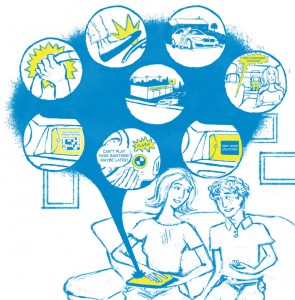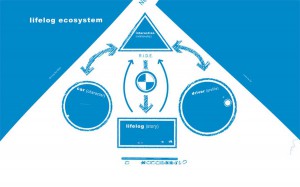


‘Ambient storytelling’ — part of the design philosophy of USC’s Mobile and Environmental Media Lab — represents a departure from customization algorithms familiar to discussions of pervasive computing. Rather than thinking about how a car can play the role of glorified butler, anticipating its driver’s every need, instead we reposition the car as co-participant in an evolving relationship. We use the framework of the Lifelog Interface as a portal though which drivers can engage with their vehicle as a new kind of experience platform. In our model, the car is no longer merely transport but a springboard for adventure, a “drivable” musical instrument, a 21st century scrapbook, and a playful reimagining of what it means to drive. Our prototype transforms the concept of a car key — which we see as a tangible avatar of the vehicle — into an evocative interface object. When drivers return home, this object beckons them and offers a portal into the Lifelog Interface. The interface itself plays on the metaphor of concentric tree rings to represent units of time. Navigating through these rings, drivers can visualize, plan, organize, and reflect on a variety of experiences including: (1) soundscape compositions generated by the car’s internal and environmental sensor data, (2) in-car augmented reality games, (3) guided-tour adventure modes, (4) networked trip planning, (5) car configuration and lifecycle milestones, (6) badges and social media portals. Finally, our system is designed to analyze not only the ways that drivers engage with space, media, and other drivers, but also the ways in which drivers choose (or refuse) to engage with the system itself. This iterative feedback loop between vehicle and driver allows the driver to build on their own projections and aspirations for their car as a resource for constructing the story of their vehicle as an evolving “character.”
[Mobile and Environmental Media Lab: Principle Investigator, Prof. Scott Fisher; Project Lead: Jen Stein; MEML Team: Emily Duff, Joshua McVeigh-Schultz, Jen Stein, Jeff Watson; Storyboard illustration: Cecilia Fletcher; Microsoft Surface Table programming: Emily Duff]